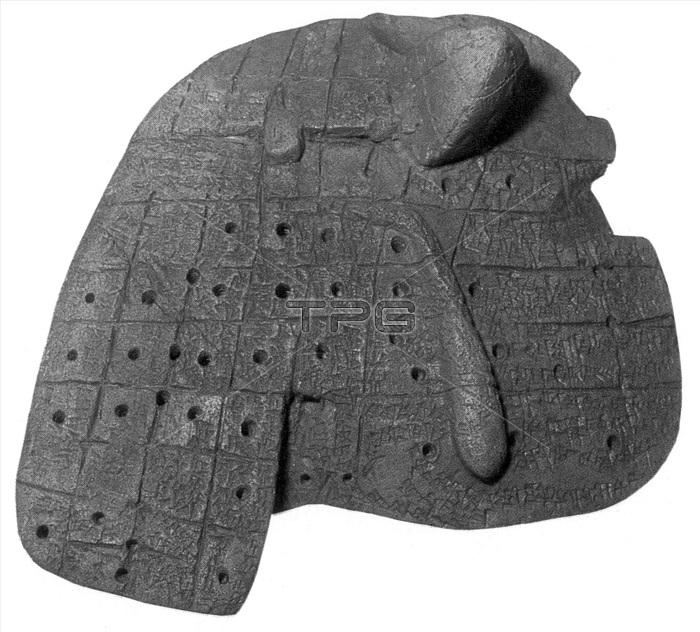
Babylonian clay model of a sheep's liver, dated between 1900 and 1600 BC. The Babylonians were famous for hepatoscopy. The liver was considered the source of the blood and hence the basis of life itself. From this belief, the Babylonians thought they could discover the will of the gods by examining the livers of carefully selected sheep. The model was used for divination, which was important to Mesopotamian medicine. This practice was conducted by priests and seers who looked for signs in the stars, or in the organs of sacrificed animals, to tell them things about a patient's illness. Wooden pegs were placed in the holes of the clay tablet to record features found in a sacrificed animal's liver. The seer then used these features to predict the course of a patient's illness. The liver is divided into 55 sections for divination purposes and covered with cuneiform texts commenting on the sections. No photographer credited, undated.
| px | px | dpi | = | cm | x | cm | = | MB |
Details
Creative#:
TOP22149213
Source:
達志影像
Authorization Type:
RM
Release Information:
須由TPG 完整授權
Model Release:
N/A
Property Release:
No
Right to Privacy:
No
Same folder images:

 Loading
Loading